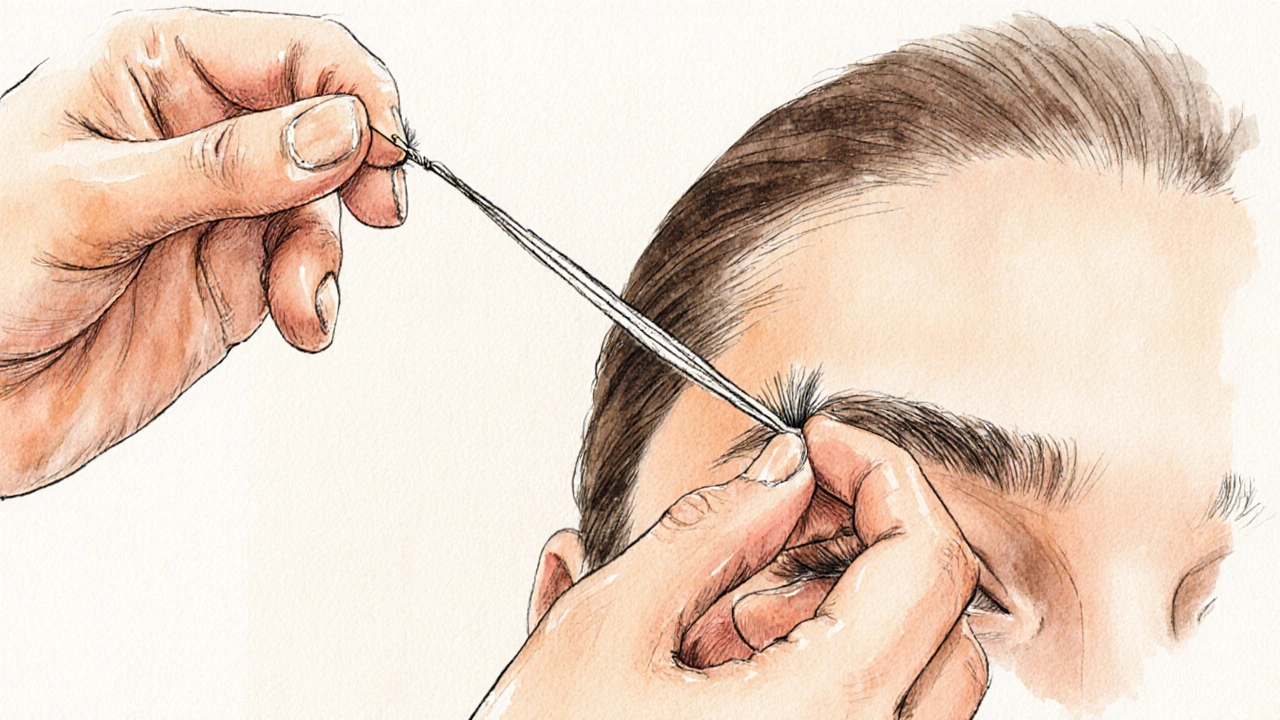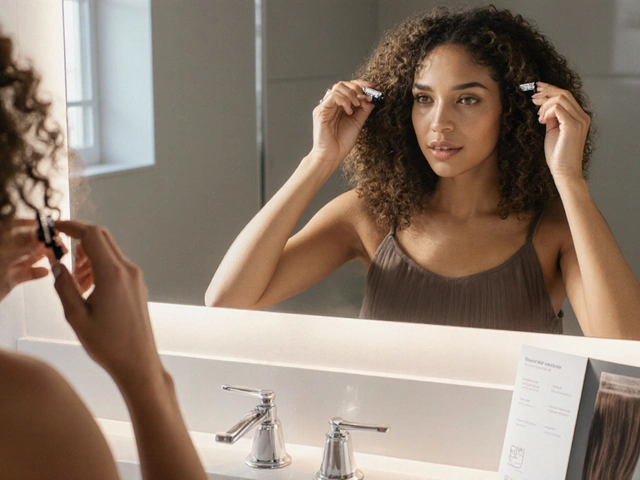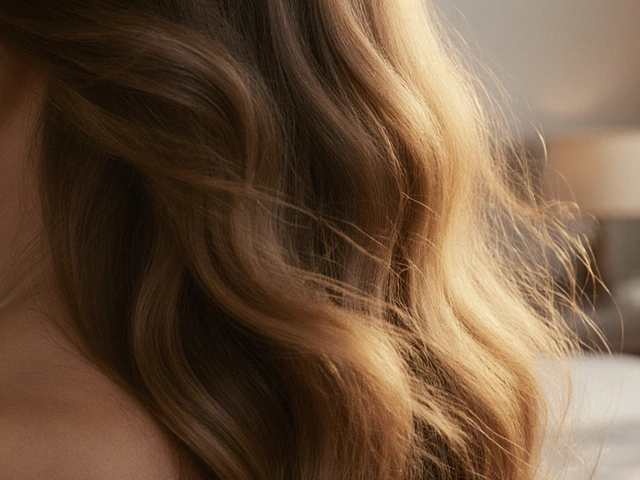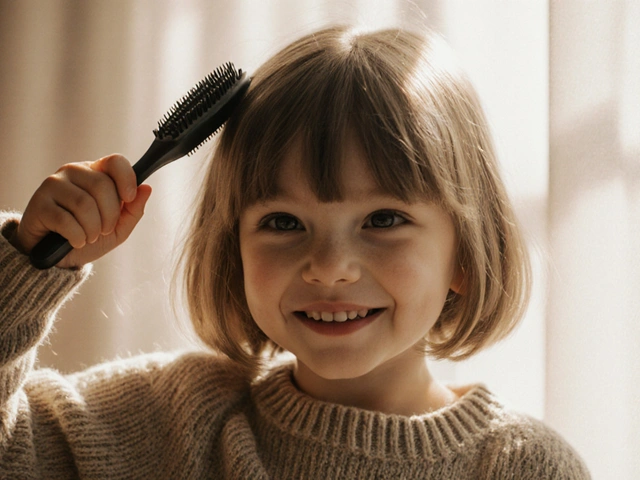Choosing between waxing and threading for your eyebrows isn’t just about which one hurts less-it’s about what works best for your skin, hair type, and lifestyle. Both methods remove hair from the root and give you clean, defined brows, but they’re not the same. One might leave your skin red and sensitive. The other might tug at your skin in ways that feel unbearable. So which one actually gives you better results without the fallout?
How Waxing Works
Waxing uses warm or cold wax to stick to the hair and pull it out from the follicle in one go. For eyebrows, technicians usually apply a thin layer of soft wax, press a cloth strip on top, then yank it off quickly in the direction opposite to hair growth. It’s fast-often done in under five minutes-and removes multiple hairs at once.
It’s great if you have thick, coarse eyebrow hair. Waxing clears out even the stubborn little hairs that threading misses. After a session, your brows stay smooth for about 3 to 6 weeks. That’s longer than threading, which typically lasts 2 to 4 weeks.
But waxing isn’t kind to everyone. If your skin is sensitive, acne-prone, or easily irritated, waxing can cause redness, swelling, or even tiny bumps. People using retinoids, Accutane, or other skin-thinning products should avoid waxing-it can lift off layers of skin along with the hair. One study from the Journal of Clinical and Aesthetic Dermatology found that 27% of participants experienced mild to moderate irritation after eyebrow waxing, especially those with dry or reactive skin.
How Threading Works
Threading uses a thin cotton thread twisted and rolled over the skin to trap and lift out individual hairs. It’s an ancient technique from South Asia and the Middle East, and it’s become popular worldwide because it’s precise. A skilled threader can shape brows down to the single hair, making it ideal for fine-tuning arches and cleaning up stray hairs.
Threading doesn’t involve chemicals, heat, or sticky substances. That makes it safer for sensitive skin, rosacea, eczema, or anyone who’s had bad reactions to wax. It’s also better if you’re on acne medications-no risk of skin peeling or scarring.
But threading has its downsides. It takes longer than waxing-usually 10 to 15 minutes-and it’s not as effective on thick, dense hair. If your brows are naturally bushy, threading might leave behind some hairs that feel like stubble. It also requires a very skilled technician. A bad threader can pull too hard, cause uneven brows, or even nick your skin. There’s no room for error: one slip and you’re left with asymmetrical brows that take weeks to grow back.
Which Lasts Longer?
Waxing wins on longevity. Because it pulls hair out from deeper in the follicle, regrowth tends to be slower and finer. After waxing, most people don’t need a touch-up for 4 to 6 weeks. Threading removes hair at the surface level, so regrowth shows up sooner-often in 2 to 4 weeks.
But here’s the catch: waxing doesn’t always get every single hair. Sometimes, short hairs near the skin’s surface are missed, especially if the wax doesn’t grip well. That’s why some people see fuzzy regrowth within 10 days. Threading, while slower, is more precise. It removes hair one by one, so there’s less chance of leftover stubble.
Which Is Less Painful?
This is personal. Some people say threading feels like a quick pinch-like being snapped with a rubber band. Others say it’s worse because it’s targeted and repetitive. Waxing is a single, sharp pull, but the pain is more intense and widespread. If you hate sudden pain, threading might feel more manageable. If you hate lingering discomfort, waxing’s quick sting might be better.
One thing’s clear: both hurt. But if you’re prone to anxiety or have low pain tolerance, threading gives you more control. You can tell the technician to go slower. With waxing, it’s over in a second-and you’re left with a burning sensation that can last 10 to 20 minutes.

Which Is Better for Sensitive Skin?
If you have sensitive, dry, or acne-prone skin, threading is usually the safer pick. Waxing strips away not just hair but also the top layer of skin cells. That’s why people with rosacea, eczema, or recent sunburns are often told to avoid it. Even if your skin looks fine, ingredients in some waxes (like resins or fragrances) can trigger reactions.
Threading uses only cotton thread and clean hands. No chemicals, no heat, no residue. It’s the go-to for people with allergies, hormonal breakouts, or post-laser skin. Dermatologists often recommend threading for patients on isotretinoin or using glycolic acid products because it doesn’t disrupt the skin barrier.
Still, threading isn’t risk-free. If the thread isn’t clean or the technician uses dirty hands, you can get folliculitis or bacterial infection. Always choose a salon that sterilizes tools and changes thread between clients.
Cost and Accessibility
Waxing is usually cheaper. In most cities, a basic eyebrow wax costs $10 to $20. Threading runs $15 to $30, depending on location and technician experience. Why the difference? Threading takes more skill and time. A good threader trains for months, sometimes years, to master precision. Waxing is easier to learn-you can buy a kit online and try it at home.
But here’s the thing: DIY waxing for eyebrows is risky. It’s easy to over-wax and remove too much, especially near the inner corner. Many people end up with uneven brows or bald spots. Threading at home is nearly impossible without years of practice. Most people who try it end up with tangled thread and frustration.
So if you want to save money, go for waxing at a budget salon. If you want perfection and your brows are your signature look, spend the extra on threading from a pro.
What About Hair Growth Over Time?
Some people swear that waxing makes hair grow back thinner. There’s no solid science to back that up. Hair thickness is determined by genetics and hormones-not by how you remove it. But repeated removal from the root can weaken follicles over time. That’s why some long-term waxers notice slower regrowth or less density.
Threading doesn’t change hair texture. But because it’s gentler on the skin, you can do it more often without irritation. That means you might end up shaping your brows more frequently, which can help train them into a preferred shape over months.

Which Should You Choose?
Here’s a simple guide:
- Choose waxing if: You have thick, coarse brows; you want longer-lasting results; you’re not sensitive to heat or chemicals; and you’re okay with a quick, intense pull.
- Choose threading if: You have fine, sparse brows; your skin is sensitive or reactive; you want precise shaping; you’re on acne or anti-aging meds; or you prefer a chemical-free method.
Some people alternate between both. They wax every 6 weeks to keep bulk under control and thread every 3 weeks to clean up the edges. That’s a smart combo if you’re serious about brow maintenance.
Pro Tips for Better Results
- Avoid caffeine or alcohol before your appointment-both can increase sensitivity.
- Don’t exfoliate 24 hours before waxing or threading. You don’t want to open up your pores right before hair removal.
- After either method, apply a cool compress or aloe vera to calm redness. Avoid makeup for at least 4 hours.
- If you get ingrown hairs, use a gentle salicylic acid toner twice a week. Don’t pick or scratch.
- Always ask to see the technician’s portfolio. Good brows are an art form.
There’s no universal winner between waxing and threading. It’s not about which is "better"-it’s about which fits your body, your skin, and your routine. Try both once. Pay attention to how your skin reacts. Take notes. Then stick with what works.
Frequently Asked Questions
Can I wax and thread on the same day?
No. Doing both on the same day is too harsh on the skin. Waxing already causes trauma to the follicles. Adding threading right after increases the risk of irritation, redness, and even infection. Wait at least 48 hours between treatments if you want to switch methods.
Does threading cause more ingrown hairs than waxing?
Actually, threading causes fewer ingrown hairs. Because it pulls hair out cleanly from the root without dragging or tugging the skin, there’s less chance of hair curling back under. Waxing can sometimes break hairs off below the surface, especially if the wax isn’t applied properly, leading to more ingrowns.
Is threading better for sparse eyebrows?
Yes. Threading is ideal for sparse brows because it’s precise. You can remove just the stray hairs without touching the ones you want to keep. Waxing, on the other hand, removes everything in its path. If your brows are thin, waxing can accidentally remove too much and leave gaps.
How often should I get my eyebrows done?
Every 3 to 6 weeks, depending on your hair growth. Waxing usually lasts longer-up to 6 weeks. Threading needs more frequent touch-ups, every 3 to 4 weeks. Listen to your skin. If you’re getting redness or irritation, wait longer between sessions.
Can I do eyebrow threading at home?
It’s possible, but not recommended. Threading requires coordination, steady hands, and practice. Most people who try it at home end up with uneven brows, pulled skin, or even small cuts. Unless you’ve trained for months, stick to professionals. Your brows are worth it.







Ronak Khandelwal
November 10, 2025 AT 06:22Jeff Napier
November 10, 2025 AT 06:57Sibusiso Ernest Masilela
November 12, 2025 AT 04:10Daniel Kennedy
November 13, 2025 AT 07:04Taylor Hayes
November 15, 2025 AT 02:45Sanjay Mittal
November 16, 2025 AT 12:34Mike Zhong
November 17, 2025 AT 05:04Jamie Roman
November 17, 2025 AT 11:42